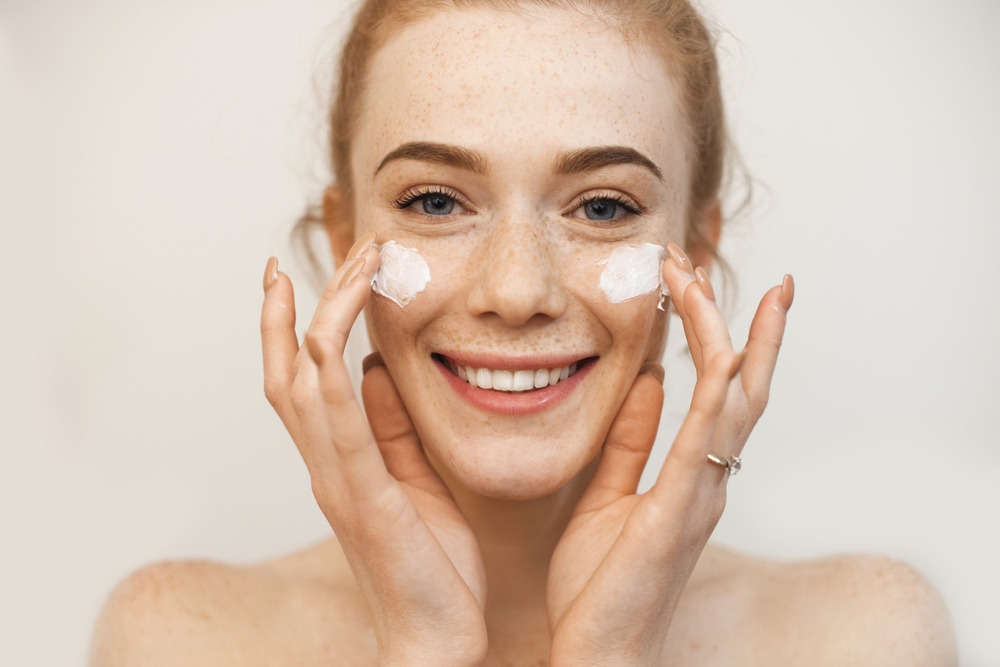For decades, Zinc Oxide has been used in cosmetics and skin care products to protect against sun exposure, soothe skin irritation, and heal wounds. While it's also an important ingredient in diaper rash creams and first aid ointments, Zinc Oxide is most commonly known as a staple in mineral sunscreen formulas. But what's the history of Zinc Oxide?
This powerful ingredient has a rich history dating back to civilizations from thousands of years ago—and its lifespan is far from over. Zinc Oxide has long been associated with its thick texture and dreaded white cast, but new strides in Zinc Oxide formulations are helping to break the stigma. Read on to discover more about this fascinating ingredient's past and, more importantly, its future.
A History of Zinc Oxide
Zinc Oxide is a naturally occurring material with a white, powdery finish found in the mineral zincite, which is present in the Earth's crust. Some sources claim the ancient Romans were the first to develop Zinc Oxide, dating back around 4,000 years ago. Around 1,500 years later, a passage in an Indian medical text mentioned it as an ingredient in a recipe for wound-healing salves.
Since then, Zinc Oxide has popped up in various civilizations, including China, Europe, and eventually the United States, for a range of uses over the centuries. According to one source, women in the Victorian era used it to powder their faces to cover freckles, redness, and blotchy skin.
It wasn't until the 1940s that Zinc Oxide was developed into a sunscreen. Swiss chemist Franz Greiter mixed the white powder with petrolatum (commonly known as petroleum jelly) to protect skin from sunburn.
What Zinc Oxide Does for Your Skin
Zinc Oxide benefits skin in many ways, so you have plenty of reasons to use (and love) it. For starters, it helps soothe irritated skin, which is why it's often used in baby powder and diaper rash cream. It also helps support wound healing and can be applied topically to cuts and burns, earning it a key spot in over-the-counter first aid treatments and healing ointments.
The skin-soothing properties of Zinc Oxide may lend it some acne-related benefits, too, since it's thought to help alleviate some of the inflammation associated with breakouts. A weakened skin barrier can worsen acne and compromise overall skin health, so the sun-protective properties of Zinc Oxide may also strengthen the skin's barrier and minimize breakouts and irritation in the long run.
And of course, one of the main uses for Zinc Oxide is protection from ultraviolet (UV) rays. Zinc Oxide is a mineral-based sunscreen filter, so it physically blocks the sun's UV rays. This helps prevent sunburns, sun damage (also known as photoaging), and even skin cancer. There are other sunscreen filters to choose from, including chemical blockers like Oxybenzone, but experts often recommend Zinc Oxide as a safe, gentle ingredient for children, pregnant women, and people with sensitive skin.
Innovations in Zinc Oxide Formulas
Between Zinc Oxide's bright-white hue and petrolatum's thick, greasy texture, you can only imagine how unpleasant early sunscreen formulas were to use. Today's Zinc Oxide-based sunscreens are a whole different animal. While they sometimes still get a bad rap for being hard to rub in, leaving behind a white cast, and having a thick, chalky consistency, rest assured you can find a Zinc Oxide formula that goes on clear and smooth.
Over time, skin care professionals and scientists have worked hard to address the pain points consumers have voiced over the years. One innovation is the introduction of hybrid formulas, which combine the transparency and pleasant consistency of chemical sunscreens with the physical protection of mineral sunscreens. Hybrid formulas like EltaMD UV Sheer Broad-Spectrum SPF 50+ offer all the advantages of mineral sunscreen with the sheer, lightweight finish of chemical formulas. This sunscreen goes on evenly and feels silky on the skin—all without leaving behind a white cast.
A Whole New World of Sunscreen
Today, even all-mineral sunscreens can rival chemical formulas in terms of application and texture. For example, EltaMD UV Restore Broad-Spectrum SPF 40 combines 100 percent mineral filters to safeguard against UV rays and minimize dark spots and fine lines. It contains moisturizing agents like Squalane to create a creamy, silky texture and restore sun-damaged skin. This formula also comes in a tinted version, so that dreaded white hue of the past doesn't stand a chance. So say thank you and goodbye to the first Zinc Oxide sunscreens and hello to a whole new world of healthy, glowing skin.
